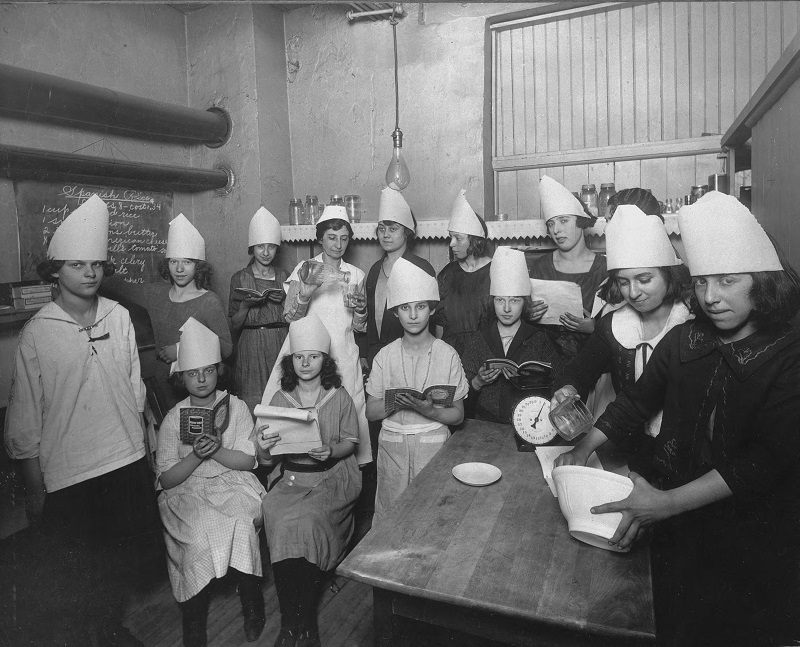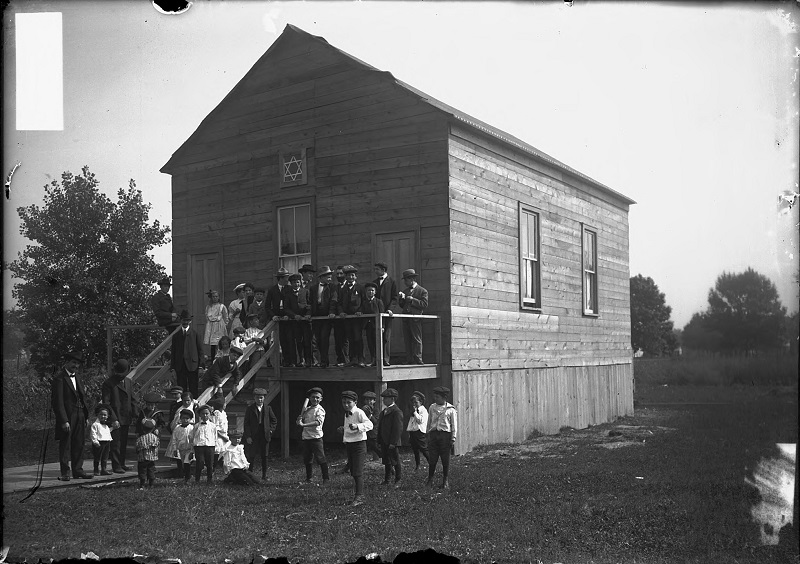The Jewish Training School of Chicago was founded with a generous grant of $20,000 from Mr. Leon Mandel in May of 1888, to maintain a kindergarten for children too young to attend public school, a kitchen garden and sewing school for girls more advanced in years and particularly a manual training school where boys may learn to love work, find out for what kind of work they are best fitted, and receive that preparation and assistance which will make them intelligent, skillful, competent workmen, in that department best adapted to their abilities.
The school was a beautiful four story building, designed by Adler and Sullivan, made possible by private donations, located on Judd Street between Clinton and Jefferson, in the immediate neighborhood where most of the children lived.
The Russian Jews emigrated to Chicago in large numbers in the 1880’s, and the purpose of the Jewish Training School was to teach the English language and familiarize the new arrivals with American methods and institutions. The school’s curriculum was designed to equip the sons and daughter of the Jewish poor with the power of making a healthy, honest and honorable livelihood, and with the desire of living in a respectable and self respecting manner.
For economic and religious reasons the newly arrived Russian Jews huddled together in what became known as the Ghetto, until a city within a city was built up where, if the building had been removed, each person would have less than a square yard upon which to stand. Centuries of persecution and restrictions in occupations had rendered the newcomers unfit to grapple with the conditions under which they now lived.
The School’s curriculum was based upon corrective measures and training in handwork. From its founding the Jewish Training School accepted boys and girls, and one goal was to place before these children as many elementary trade activities as possible, in order to find out their bent, and then encourage and direct them along lines which their natural abilities seemed to trend. The academic work was to be as practical as possible and to be brought in touch with the handwork. For the girls the School sought to connect them with domestic and commercial worlds.
“‘The past decade brought to Chicago thousands upon thousands of Jewish emigrants from the most benighted and degrading sections of Europe. They had come hither but little affected by modern culture, ignorant of our language and ignorant of the grand opportunities this free country offers its citizens; and almost without exception, they have domiciled themselves in wretched dwelling-houses in one section of the city, where they have created their own ghetto. It is as natural as night that the small quarters in which large families are domiciled should be unclean, and that those in whom persecution abroad developed a hereditary tendency to trading should in this country make a livelihood by peddling or by unskilled labor.
This is an unfortunate state of affairs, but, endeavor all we will, it is barely possible to do much for the permanent social improvement of the adults. We must leave it to the free institutions of this country to improve them as best they may. But the children we can influence. These saplings can still be bent. Of them we can make clean, honest, useful, educated Americans….”
From: Second Annual Report of the Executive Board of the Jewish Training School of Chicago, Joseph Stolz, Secretary.
next: Legal Context

